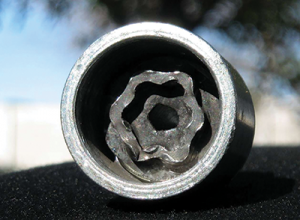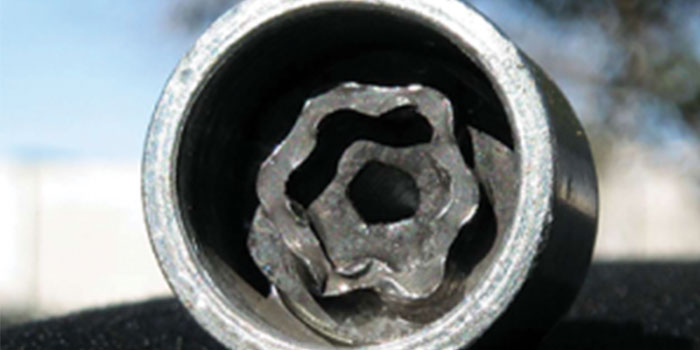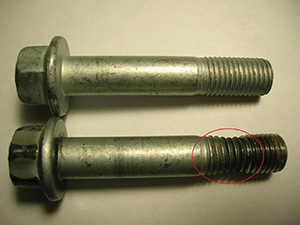Nothing can turn a new tech into a veteran but time and experience, and often that experience is going to come from making mistakes – sometimes real bad ones – and learning from them (you hope). Sure, everyone makes mistakes, and even the best and most experienced techs will sometimes have a bad day, but there does seem to be a set of mistakes that new techs just make all the time. Time and time and time and time again.

In my experience, by addressing these most common mistakes right away with new tire techs, the worst of them can be avoided.
Mistake 1: Over-torquing
Nothing screams “new tire tech” like over-torquing fasteners, because it’s the new techs that have not yet experienced the consequences of their own actions when the customer comes back and they can’t get the fasteners off. Like when they have a flat and need to change to their handy donut while parked along the side of the road … in the rain … at night. Obviously, 99% of over-torquing problems are caused by a tech who uses an impact gun without torque sticks, or other forms of torque protection. Like a hand-held torque wrench.
Solution: There is a long and often rancorous argument regarding whether it is possible to achieve proper torque without over-torquing by “feathering the trigger” on an unprotected impact gun. In my own experience, I have never yet seen any person who could actually do this. However a number of people claim to know highly experienced tire techs who could do it because they have “a feel for the gun.” My response is always the same: Maybe so, but doubtful.
How does one gain that kind of experience and feel without over-torquing a bunch of fasteners – perhaps even snapping off a few bolts – first? How much is the tire dealer willing to “invest” in a tire tech who breaks customers’ cars? And why go to the trouble when there are perfectly good torque sticks and hand-held torque wrenches available? Use. Torque. Protection. All the time, every time. It’s really just that simple.
Mistake 2: Cross-threading
I’ve seen far too many new techs who seem to think they’ve landed on a NASCAR pit crew, and that it’s so utterly cool to just barely thread the lugnuts onto the bolts and then gun them all down tight as quickly as possible. I mean it just looks so professional, right?
Wrong. It makes you look like a new tech. It’s way too easy to cross-thread a fastener that way, and with the ratchet spinning that fast, it’s almost impossible to stop the gun before doing irreparable damage to the threads. Even if you don’t cross-thread the nut or bolt or both at first, any damage or blockage in the threads has the potential to become a train wreck very quickly. If you’re really unlucky, you could strip the threads so effectively that it’s impossible to remove the lugnut without cutting the bolt. Shop managers just love it when you do that.
Solution: Always, always, always thread lugnuts and bolts by hand for at least 10 turns before you put an impact or torque wrench to work. Ideally, I prefer to simply snug them all the way down by hand before tightening with a wrench at all – this will also ensure that everything is seated and centered correctly before you add full torque.
Mistake 3: Stripping the Wheel Lock Key
Wheel locks are those clever little anti-theft devices that replace one of the lugnuts with a special nut that requires a specially designed “key” to remove it. The standard style of key has a ridge of metal inside it in a unique flowerlike design that fits into the lock and allows the tech to apply torque.
The problem is that many new techs overestimate just how strong that ridge of metal is and apply too much torque. It’s relatively easy to damage, strip or even shear off that ridge of metal, which has the obvious drawback of rendering the key useless and making the customer somewhat perturbed.
Solution: Use a torque stick or a torque wrench to tighten wheel locks. Since you should never use a torque stick to loosen any kind of bolts, use some care when using an impact wrench to loosen locks. Make absolutely certain that the key is firmly seated before applying torque to avoid slippage.
Mistake 4: Losing the Lock Key
It’s also all too easy to forget to put that tiny piece of metal back where it belongs when you’re done. The customer is unlikely to remember to check. Some customers are even unaware that they have wheel locks at all, as they are often installed by dealers or automakers with little or no explanation to owners as to what they are. Even so, few customers are likely to think well of your shop if they end up stuck by the side of the road with no way to remove a flat tire because their key is missing.
Solution: In my shop, our policy was to literally put the wheel lock key into the customer’s hand when checking out. If necessary, we would then show the customer where the key belonged and explain its importance. If your shop doesn’t do this, it’s your responsibility to make absolutely certain that the lock goes back where it belongs, every time.
Mistake 5: Shoveling the TPMS Monitor
The vast majority of TPMS sensors are connected to a valve stem and sit just inside the tire along the wheel’s rim flange. The vast majority of the early TPMS sensors do not sit quite flat against the wheel, instead being slightly angled away from the barrel.
A tire tech who is not paying attention can easily put the shovel of the mounting machine near the valve stem and break the tire bead inward, pressing the bead over the TPMS sensor and snapping it off the valve stem. Just to make things more interesting, certain older TPMS systems have the monitor on a metal band wrapped around the drop center of the wheel. With this style, the monitor is generally placed 180 degrees opposite the valve stem, where it is just as vulnerable to being taken out by the shovel.
Solution: There are several ways to accomplish not killing the sensor. My favorite is to unscrew the collet nut on the valve stem once the tire has had pressure removed and allow the stem and monitor assembly to simply drop down inside the tire for later retrieval. Alternatively, always begin breaking the tire bead at 90 degrees to the valve stem.
When you put the wheel up onto the turntable for dismounting, ensure that the valve stem is placed at the 1 o’clock position, so that when you lever the bead over the wheel’s lip the part of the bead that slides down into the wheel’s drop center will not contact the monitor as you turn the wheel.
Quite frankly, most of these mistakes and solutions just involve proper training and paying attention, so whether you are a new tire tech or you get to manage and teach new techs, covering these mistakes before they happen can generally save a bunch of headaches farther down the road.
Courtesy TIRE REVIEW.















